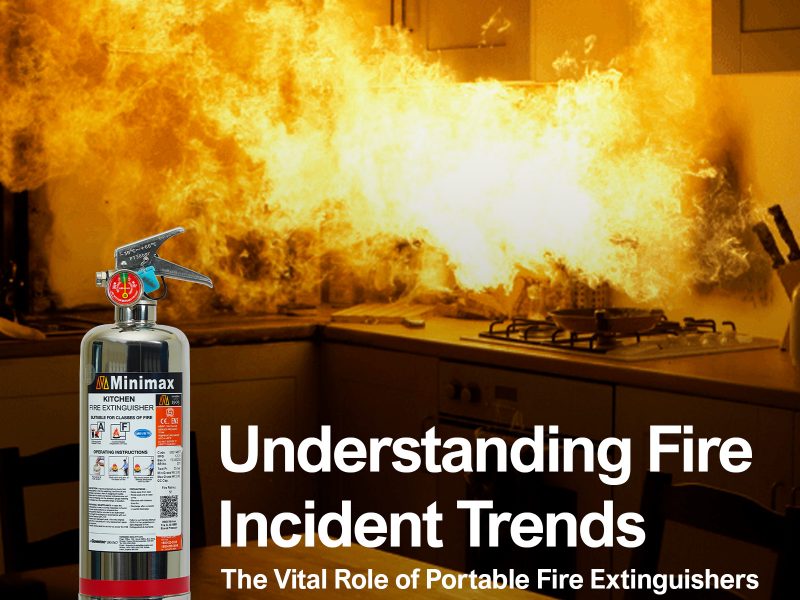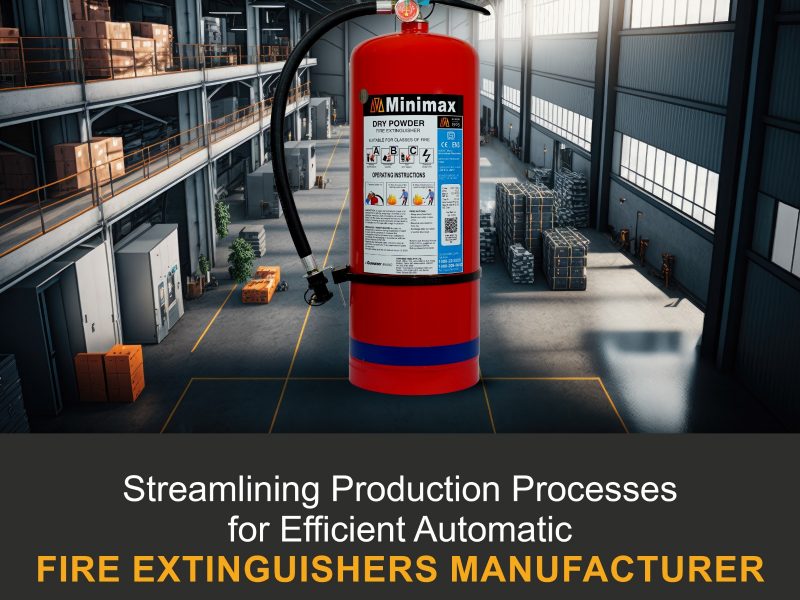There is nothing worse than needing a fire extinguisher in an emergency only to discover that it isn’t charged or doesn’t work. Visually inspecting your fire extinguishers helps ensure that the fire extinguishers are in good working condition.
Fire extinguishers are a critical part of fire safety installations. Like every piece of equipment, fire extinguishers also have a fixed lifespan.
As per IS 2190, every fire extinguisher has a defined lifespan. Consider the life of a fire extinguisher from the date of the manufacturing while deciding on a replacement. The organization shall ensure the safe disposal of fire extinguishers after a fire extinguisher completes its lifespan. Fire extinguishers shall be marked unusable before disposal, so as to prohibit subsequent use.
If the extinguisher is fully or partially charged, call an authorized extinguisher service agency and request the fire extinguisher disposal. Ask for a certificate of disposal mentioning the serial nos. of cylinders from the agency.
If disposal service is not available, operate the fire extinguisher in an open environment. After the fire extinguisher is fully discharged, disengage the valve slowly to ensure the release of residual pressure. Dissemble components of the fire extinguisher. Send the cylinder and other parts to a metal recycler for scrapping. Note the date of rejection and the mode disposal with serial numbers in the register.
The detailed procedure of fire extinguisher disposal is explained here.
The organization has a statutory duty to ensure the safe disposal of fire extinguishers. It is illegal to discharge chemicals into open drains and watercourses. AFFF foam extinguisher should only be discharged into a sealed drain to prevent contamination of groundwater.
ABC Dry powder extinguisher contents can be safely incorporated into landfills preferably in sealed containers although it is biodegradable. CO2 and all other chemical-based extinguishers are best sent for recycling as the content can be recovered and reused. Only water extinguishers can be safely discharged into an open drain or onto open land.
If the extinguisher is partially or completely full, start releasing any pressure remaining in the container. To release pressure, squeeze the top to let out a bit of an extinguishing agent. Do not release the entire contents of the container; wait for the needle on the gauge to fall to zero — this could take time. After the needle on the gauge displays zero, start the disengagement of the valve. After disengagement of the valve dispose of the balance contents as per the process explained for agents.
DCP Gas Cartridge Type Extinguisher
- If the extinguisher is partially or completely full, operate in an open environment.
- Disengage the valve slowly for the residual pressure to release. Remove the valve completely.
- Dump the balance undischarged powder in the land pit and close the pit back with mud, content will decompose itself. As per Dry chemical powder, BIS standards IS: 14609 and IS: 4308, It is non-toxic and doesn’t pollute the soil.
- Dismantle parts of extinguisher and squeeze to cylinder body to make permanent deformation to scrap it.
Water Gas Cartridge Type
- If the extinguisher is partially or completely full, operate in an open environment.
- Disengage the valve slowly for the residual pressure to release. Remove valve completely.
- Pour the remainder into the solar evaporating tank.
- Dismantle parts of extinguisher and squeeze to cylinder body to achieve permanent deformation. to scrap it.
CO2 Type Fire Extinguisher
- If the extinguisher is partially or completely full, operate in an open environment.
- Weigh the extinguisher and compare the reading with the weight details punched on the neck and ensure it is empty.
- Disengage the valve slowly for the residual pressure to release. Remove the valve completely.
- Dismantle parts of extinguishers and cut the cylinder to scrap it.
Powder Stored Pressure Type Extinguisher
- If the extinguisher is not used, it is to be operated.
- Disengage the valve slowly for the residual pressure to release. Remove the valve completely.
- Dump the balance undischarged powder in the land pit and close the pit back with mud, content will decompose itself. As per Dry chemical powder, BIS standards IS: 14609 and IS: 4308, It is non-toxic and doesn’t pollute the soil.
- Dismantle parts of the extinguisher and squeeze to scrap it.
When the fire extinguisher has completed the lifespan as per the IS 2190 guidelines, the old extinguisher shall be disposed of properly. This process, to be followed carefully. Under no circumstances charged fire extinguishers to be thrown as waste. It is a pressurized container and is potentially dangerous if crushed and the contents can be a hazard to the environment.


